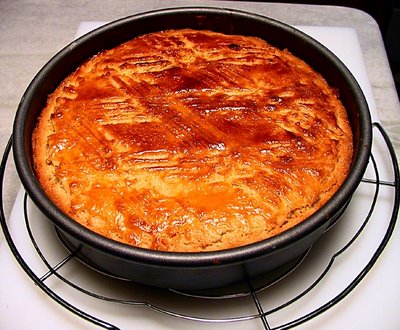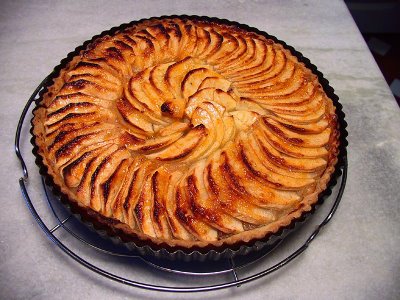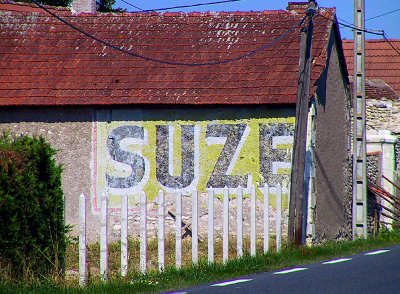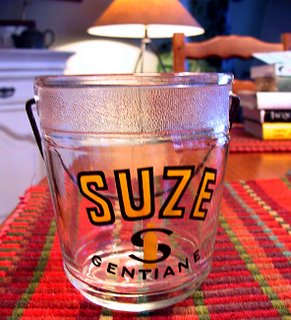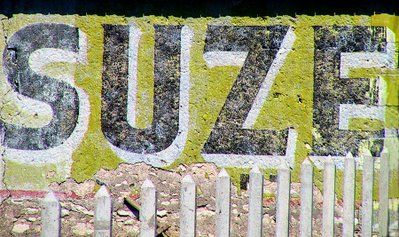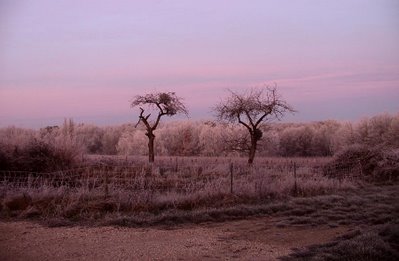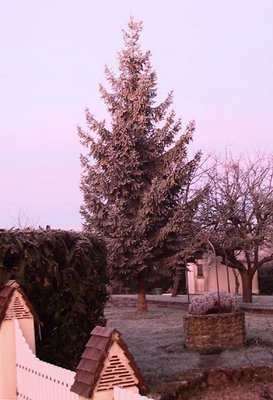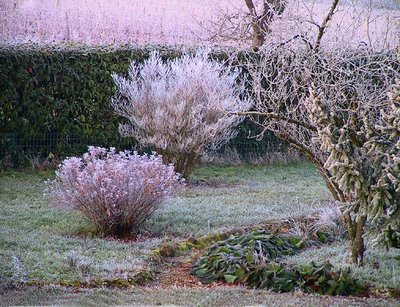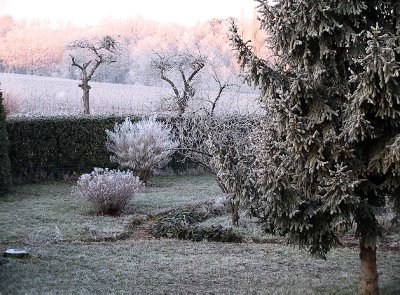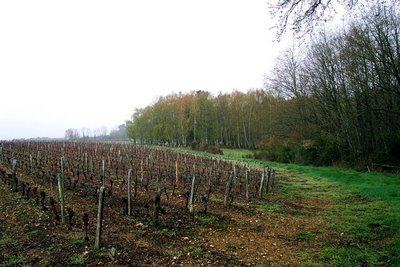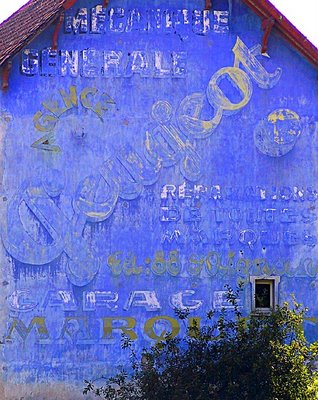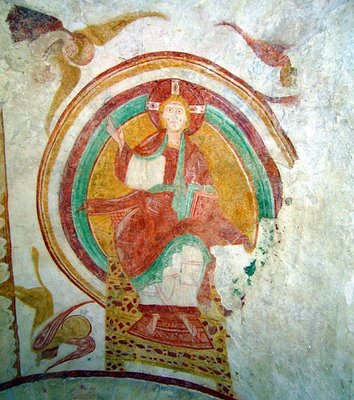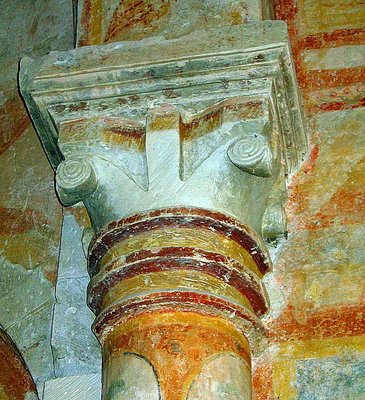The menu for this réveillon includes oysters, foie gras, and canard à l'orange — that's duck with orange sauce. Not to mention champagne, cheeses, and desserts. There will be about 10 of us there for the party.
We were asked to bring desserts and cheese. I made a cake called a gâteau basque and Walt made a tarte aux pommes. The gâteau basque is a kind of cookie dough cake with a filling. I filled this one with plum jam that I made last fall using plums that I had picked in a friend's orchard.
I left the cake in the pan overnight so it could cool completely, and then I was very happy this afternoon when it dropped right out of the pan after I turned it over. I was afraid it would be stuck in there.
Here's a picture of Walt's tarte aux pommes — apple tart. He makes his own pie crust with butter, what is called a pâte brisée. As a base for the sliced apples (nicely arranged, no?) he sprinkled in some ground hazelnuts and some cinnamon and nutmeg, and then he spread his own home-made apple sauce over that. Then the apples went on top.
I don't think I'll be taking any pictures this evening, but you never know. More tomorrow...
* * * * *
Tomorrow is January 1, 2007. Being a U.S. Southerner, it is my tradition to eat black-eyed peas on New Year's Day. Eating black-eyes brings you good luck all the year long, or so we say. Luckily, our Intermarché supermarket sells black-eyed peas. They are imported from Portugal (but probably grown in the U.S.) and are kept in the exotic foods section along with the soy sauce, taco shells, and Lancer's rosé wine.
 I'm soaking my black-eyed peas overnight in the new dish I bought this
I'm soaking my black-eyed peas overnight in the new dish I bought thisweek. I splurged and paid two euros for this nice earthenware terrine.
I sprinkled coarse salt, black peppercorns, dried thyme, and a few bay leaves over the meats and let them macerate for 24 hours before cooking. Then today I rinsed off the salt and spices before I immersed the duck and pork in simmering duck fat to cook for 90 minutes. See this earlier post about making duck confit if you're interested: Making confit out of a duck.
We also have a couple of saucisses de Toulouse to eat with the black-eyed peas, duck, and pork. As you can imagine, this dish will make several meals for us, and it can easily be frozen and eaten later in the winter too. What we'll end up with will be a kind of cassoulet.
I saw an article in the New York Times today about people who moved to a certain neighborhood in Queens because they liked the food there. Walt and I moved to France because we like the food here. Among other things...
Happy New Year's, Eve!

